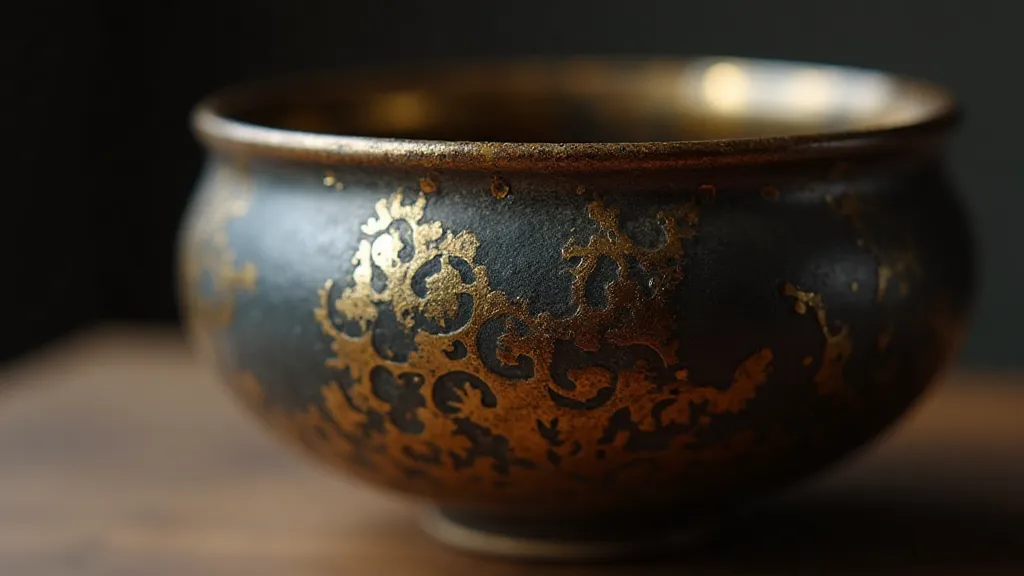The Metaphor of Mending: Cultivating Self-Compassion in the Writing Journey
The quiet sigh of an antique accordion. It’s a sound that carries history, a breathy exhale from a time when music was often handmade, heartfelt, and intensely personal. I recently inherited my grandfather's accordion, a beautiful, battered instrument that had clearly seen a life well-lived, filled with both joyous performances and, inevitably, periods of neglect. It’s cracked, its bellows worn thin, some keys stubbornly silent. It's imperfect, and deeply, profoundly beautiful because of it. Looking at it, I was reminded of the Japanese art of Kintsugi—the practice of repairing broken pottery with gold—and a powerful parallel emerged regarding the often-turbulent journey of a writer.

The Essence of Kintsugi: Embracing Imperfection
Kintsugi, meaning "golden joinery," isn't about hiding the cracks or attempting to erase the damage. It's about celebrating it. When a piece of pottery breaks—an event that, let's be honest, is often a consequence of carelessness or the relentless march of time—it’s not discarded. Instead, the broken pieces are meticulously reassembled, the cracks filled with a lacquer mixed with precious metals, typically gold, but also sometimes silver or platinum. The resulting vessel isn’t just functional again; it's transformed into something even more valuable, more beautiful than it was before. The damage is not a flaw; it’s a testament to its history, a visible record of its journey.
The philosophy behind Kintsugi speaks volumes about acceptance and resilience. It rejects the Western ideal of flawless perfection in favor of an appreciation for the unique beauty born from adversity. Imagine the potter’s initial reaction to a shattered pot. Disappointment, frustration, perhaps even anger. But Kintsugi flips that narrative. It suggests that even in shattering, there’s an opportunity for renewal and heightened beauty. The gold isn't masking the breakage; it's illuminating it, honoring it as an intrinsic part of the object’s story.
The Writer's Journey: A Landscape of Cracks
The writing life, much like the lifespan of an antique accordion, is rarely a smooth, unbroken melody. There will be times of soaring inspiration, when words flow effortlessly from your fingertips. But there will also be periods of agonizing self-doubt, of crushing rejection, of feeling utterly lost and unable to articulate even the simplest thought. These are the cracks in the writer’s vessel – moments of perceived failure that threaten to shatter our confidence entirely.
I’m intimately familiar with these "cracks." My own writing journey has been punctuated by countless rejections, critiques that stung, and periods where I questioned my ability to string together a coherent sentence. There were times I wanted to abandon the craft altogether, to sweep the unfinished manuscripts into the oblivion of an unread drawer.
The temptation to strive for an unattainable perfection—to produce a flawless manuscript, to achieve instant recognition—is a powerful one. But chasing that ideal is a recipe for constant disappointment and self-criticism. It's like demanding that the accordion play perfectly, ignoring the beautiful history embedded in its worn keys and faded bellows.
Applying Kintsugi to Your Writing Practice
So, how can we apply the principles of Kintsugi to our writing practice, to our own creative "vessels"? The first step is to recognize that setbacks are inevitable. They are not signs of failure; they are simply part of the process. Each rejection, each negative review, each moment of self-doubt – these are opportunities to learn, to grow, and to become a stronger, more resilient writer.
Instead of trying to erase the "cracks," acknowledge them. Embrace the vulnerability that comes with sharing your work. Recognize that those moments of perceived failure are often the most valuable lessons you're going to receive. Analyze what went wrong, learn from your mistakes, and then move forward with renewed determination.
Think of the gold in Kintsugi not as a superficial embellishment, but as a symbol of the effort and care you’re investing in your craft. It represents the time you're spending honing your skills, the courage you’re summoning to put your words out into the world, and the perseverance you're demonstrating in the face of adversity.

Cultivating Self-Compassion: The Golden Lining
Ultimately, the key to applying Kintsugi to your writing journey lies in cultivating self-compassion. Be kind to yourself when you stumble. Offer yourself the same understanding and encouragement that you would offer a friend. Acknowledge your imperfections, celebrate your progress, and remember that every writer, regardless of their level of success, faces challenges and setbacks.
The accordion, weathered and imperfect, still holds its beauty and continues to produce music, albeit sometimes with a slightly off-kilter tone. It’s a reminder that brokenness isn’t the end of the story. It’s often the beginning of something new, something more profound. And so too, with our writing. The cracks, the rejections, the moments of doubt – they are not flaws to be hidden, but golden opportunities to reveal the unique strength and resilience that lies within us.
Perhaps the most important lesson of Kintsugi is this: Your brokenness does not diminish your worth; it enhances it. It tells a story of survival, of perseverance, and of the unwavering pursuit of your craft. Embrace the cracks, fill them with gold, and allow your writing to shine, not despite its imperfections, but because of them.

The Enduring Value of Imperfect Creation
The repaired accordion, the Kintsugi bowl, the writer’s manuscript – all are testaments to the enduring value of imperfect creation. They remind us that true beauty often lies not in flawless perfection, but in the story of resilience, perseverance, and the unwavering pursuit of our craft. Let us embrace our cracks, fill them with gold, and allow our voices to be heard, loud and clear, in all their imperfect glory.





